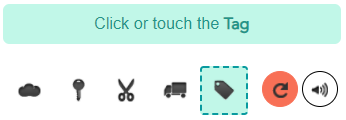Table of contents
What is the best car insurance for a new vehicle?
Auto insurance is the least exciting aspect of buying a new vehicle. But if you've just spent a fair amount on your new vehicle, you need to make sure it's properly protected. Whether new or new to you, let's describe the best ways to get and save on auto insurance.
Auto Insurance for a New Vehicle
Given its relatively high value, a new vehicle guarantees special insurance considerations. Here are some coverages that you should consider.
A good option: replacement of a new car.
The specific details of this coverage vary by insurance company. Covers the value of a newer replacement vehicle if your car adds up to a covered claim. If you are determined to own a new vehicle, you should consider the price of this coverage with your provider.


To Consider: Gap Insurance
Gap insurance is offered by many insurance companies or through car dealers. Gap coverage applies to the difference between the value of the vehicle and the value of the vehicle after depreciation.

Must See - Collision Coverage
If you are renting or financing your vehicle, you must include collision coverage. Protects your vehicle if it collides with something like another car or a fixed objec
Table of contents
To consider: uninsured motorist coverage - bodily injury and property damage
Depending on your state, uninsured motorist coverage is required by state law. If not, this coverage is highly recommended. Your bodily injury coverage for uninsured motorists will cover your medical expenses in a no-fault accident. Your uninsured property damage coverage will cover your new car if you are hit by an uninsured driver, such as a hit and run.

Foolproof: Comprehensive coverage
Like your collision coverage,comprehensive insurance is required if you rent or finance a vehicle. Protects your vehicle from damage that occurs outside of a comprehensive claim, such as weather, vandalism, and theft..
Auto Insurance for Your First Car - What You Should Know
If your new vehicle is new to you, we have some additional tips to consider. If you buy your car from a dealer, you will most likely be asked to show proof of insurance before driving the vehicle off the lot. This is especially true if you lease or finance the vehicle. Understanding what you will need to get insurance fast is a must if you don't want to spend the entire day at the dealership. Here are some simple tips to help you get into the driver's seat as quickly as possible.
Table of contents

What You Will Need to Get a Quote
To get a quote more accurate car insurance, you will need the following:
- Birth date of all drivers using it
- Driver's license numbers of all drivers using the vehicle Garaging address (most likely home address)
- Insurance history of drivers who use the vehicle Driving
- history of drivers who use the vehicle Vehicle
- identification number (VIN): this informs the insurer of vital information about the vehicle including make and model
Once you find the vehicle you want, you can get a quote before buying the vehicle using the VIN. Many dealerships include the VIN on their website, allowing you to get an accurate estimate of your auto insurance quote. Most insurance companies will give you a quote number to recover the saved quote. Once you activate the policy, your new insurance company will send your proof of insurance to the dealer and you can withdraw from the lot. Simple like that!
How to Transfer Insurance to a New Car
There is a possibility of confusion when insuring a newly purchased car, but unless your driving situation changes dramatically, you are unlikely to need to buy a completely new policy right away. As long as your old policy is in effect when you drive off the lot, your new car must be covered. Your old policy will generally be extended to the new vehicle for a short period of time, known as the grace period, until you can add it to the policy. It is best to ensure that your company offers a grace period in advance. The amount of time insurance companies allow before requiring a new car to be formally added to a policy varies, usually from one week to 30 days. It is important to notify your insurance company as soon as possible to transfer your insurance to your new car. During this time, your new vehicle will be insured up to the same limits as the previous one. If your old car only had minimal liability coverage, that would apply to the new vehicle. If you want full coverage, you will need to add it when you transfer the new car to your insurance policy. The process of transferring insurance coverage to a new car is fairly straightforward and often only requires a single call to your insurer. You will need to provide certain details about the vehicle, but your coverage must be implemented the same day. Please note that transferring insurance to a new car may cause your rate to change.
How to save on insurance for a new car
After the total cost of the vehicle, your car insurance is the second most expensive part of owning a vehicle. Let's explore ways to save on auto insurance.
Compare
Your best option is to look at as many auto insurance companies as possible to see if you can get a better rate elsewhere.

Choose the Right Insurance Coverage
If your vehicle really is "new," you don't have much leeway in terms of what coverage it may have. Most of the time, if you have a lease or loan on the vehicle, having "full coverage" is a requirement of your agreement. By full coverage, we are referring to the comprehensive collision, which is not required by law and only protects your vehicle. Therefore, if your vehicle is paid for and is an older model, you may not need this additional coverage. A general rule of thumb in the insurance world is that if your vehicle is worth less than $ 4,000, you probably don't need physical coverage. You can determine the value of your vehicle using Kelley Blue Book or the NADA online guide. However, if your vehicle is worth more than $ 4,000 but you still want to save, consider increasing your deductible. If your deductible increases in your collision or comprehensive coverage, your premium goes down. Another benefit of this is that it lowers your incentive to use your deductible instead of paying out of pocket. As we learned from the previous section, using your collision coverage can have lasting effects on your insurance. By lowering the dollar value of what you would receive in compensation, there is less incentive to file a claim.
Before filing a claim, follow these steps:
- Get an estimate of repairs from a local mechanic.
- Choose the cheapest long-term option.
- Insurance history of drivers who use the vehicle Driving
- Let's look at this from a specific example. He backs up
his vehicle on a pole, causing $ 1500 worth of damage. This type of accident would be subject to a collision fault claim, which raised premiums in 2018 to $ 617 a year. If we consider this rate increase for 3 years, that will equal $ 1,851.
If you file a claim, you must pay your collision deductible before receiving coverage. In total, this claim will cost you $ 2,351 versus $ 1,500 in out-of-pocket expenses. In this case, it makes sense not to involve your insurance company.
Use your insurance coverage sparingly.
If you don't know much about car insurance, you might be more inclined to use it if you damage your vehicle, rather than just covering the cost yourself. Unfortunately, auto insurance companies can financially penalize you if you file a claim, regardless of whether it is your collision coverage or liability. *
Table of contents
Check Discounts
While most of these discounts are small (3-5% in savings), grouped together can add up to make your premium more affordable.
- Multiple Policy Discount
- Good Driver Discount
- Bank Account Payment
- Paid in Full Discount (for paying your premium in one payment)
- Multiple Vehicle Discount




























